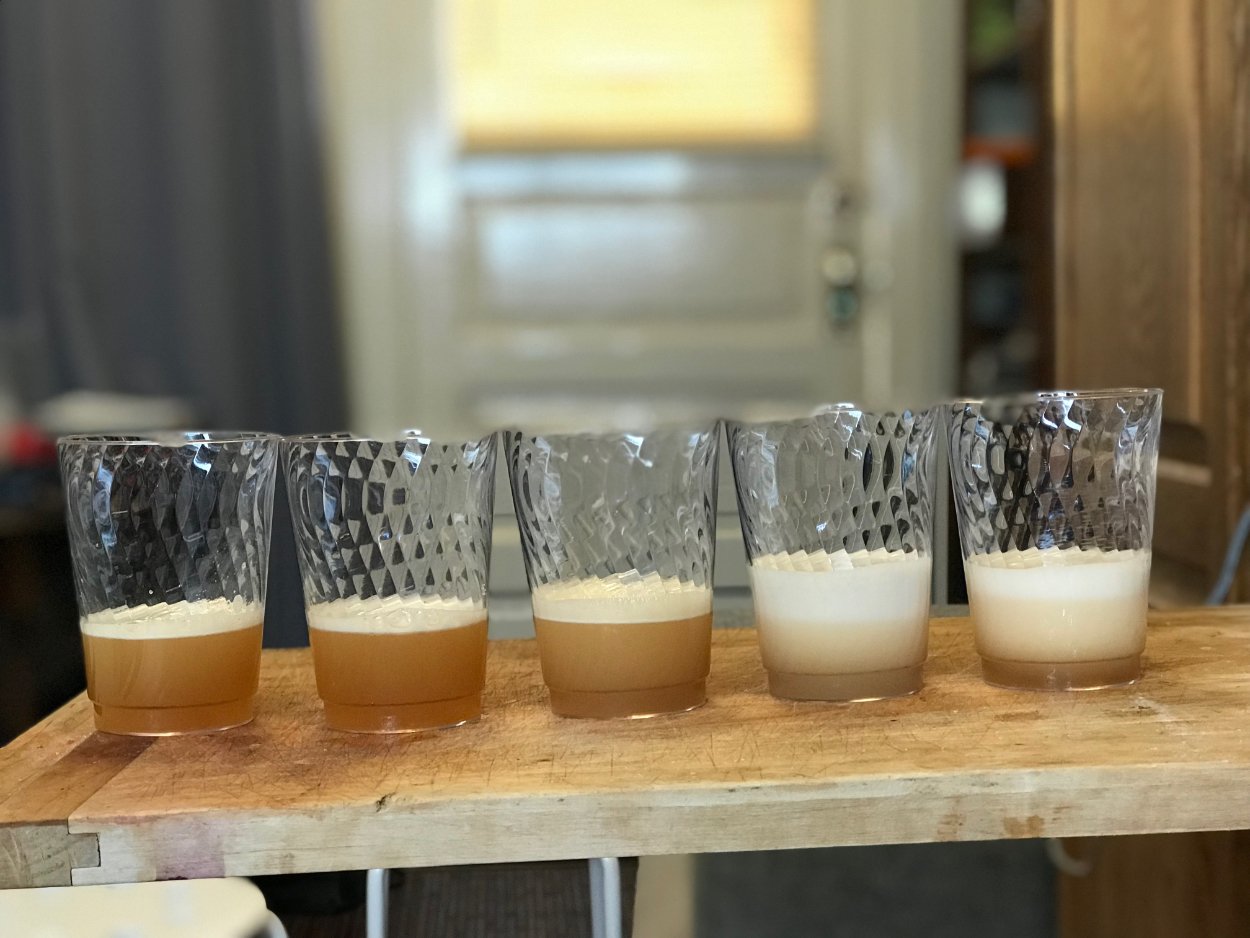In my previous post I tried some ways to see what preparation method makes the best aquafaba: chickpea/garbanzo bean water used in place of egg whites to make cocktails frothy.
To recap, I found the best aquafaba waters were, in order:
- From the can
- Chickpea flour boiled then letting the solids settle off.
- Cooking water for chickpeas.
In the next set of experiments I wanted to see if I could produce more water in cooking and see if I could use unboiled chickpea flour. So my aquafabas were:
- Quick-Soaked Beans Cooked for 90 Minutes in Lots of Water: I did the quick soak method this time: I brought the beans to a boil for 3 minutes, then let them soak for 2 hours before discarding the water. This water had only a slight flour aroma.
- Quick-Soaked Beans Cooked for 3 Hours in Lots of Water. This had a touch of flour aroma.
- Boiled Chickpea Flour Water: The same sample from the previous experiment. Its aroma was kind of like flour.
- Unboiled Chickpea Flour Water: I shook some chickpea flour with water in a jar then let it settle overnight. I used only the lightest of this water to minimize solids. It had a fairly yucky "raw" flour aroma.
- Second Cook Water, from previous experiment: After cooking beans, I reboiled half of them for an additional 30 minutes and kept this water.
For the experiments, I used a Disaronno Sour (2 parts Disaronno to 1 part lemon juice), plus 1/2 ounce aquafaba.
The winners were:
- #4 Unboiled Chickpea Flour Water. The downside to this is that it has the most flavor – I consider it tannic but others might say metallic; plus it's greyish in color compared with the brownish ones.
- #5 Second Cook Water, which was sort of the control. It tasted better than the winner.
- #3 Boiled Chickpea Flour Water. This also tasted fine/neutral.
- Then 1-2, the chickpea water made from long boils with lots of water, didn't produce enough foam to count.
Conclusions:
- My experiments in boiling less beans for a long period of time failed.
- Boiled chickpea flour tastes better than unboiled, plus it looks better in the glass. It's not quite as foamy but may be worth the tradeoff.
- Regular chickpea cooking water is still pretty decent. It would be worth looking at the costs between using dried chickpeas vs the flour.
Future Experiments:
If this chickpea flour is working so well, maybe I should try using the smallest scoop possible I can of it. I did try this previously and found that the solids were too problematic, but it's worth another shot.
I've now tried it and here is the post!

Leave a Reply